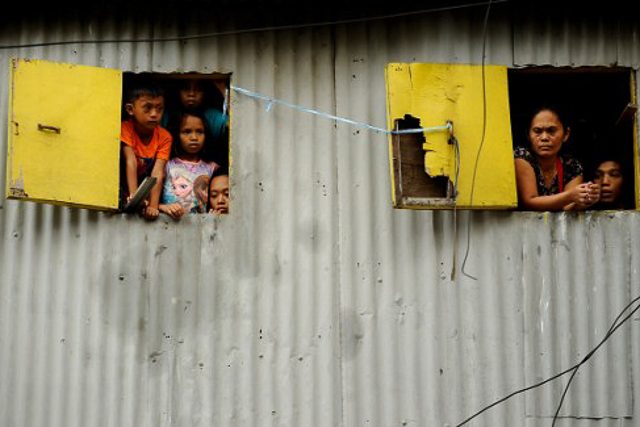SUMMARY
This is AI generated summarization, which may have errors. For context, always refer to the full article.

MANILA, Philippines – The number of poor Filipinos declined in the first half of 2018, the Philippine Statistics Authority (PSA) announced on Wednesday, April 10.
The PSA said the country’s poverty incidence among Filipino individuals in the first semester of 2018 was estimated at 21%, lower than the 27.6% recorded during the same period in 2015. This is referred to as the proportion of the population living below the poverty line to the total population.
“Over the course of 3 years, we can see that poverty decreased substantially – down by 6.6 percentage points – thanks to sustained economic growth and critical and broad-based reforms and investments that have translated to employment generation and social protection,” said Socioeconomic Planning Undersecretary Adoracion Navarro.
Meanwhile, poverty incidence among Filipino families was estimated at 16.1%, lower than the estimated 22.2% in 2015. This is defined as the proportion of families whose income is below the poverty line to the total number of families.
The National Economic and Development Authority (NEDA) attributed the improved figures to the growth in the construction and manufacturing sectors, which created more employment opportunities.
The subsistence incidence among Filipino families was estimated at 6.2%, lower than the recorded 9.9% in the same period in 2015. The subsistence incidence is the proportion of Filipino families whose incomes fall below the food threshold.
Food and poverty
The PSA said that in the first semester of 2018, a family of 5 needed no less than P7,337 to meet basic food needs for a month. This amount is referred to as the food threshold.
Meanwhile, no less than P10,481, on average, was needed to meet both basic food and non-food needs for a family of 5 in a month, according to the PSA. This amount is the poverty threshold.
The figures were 10.9% higher than the food and poverty thresholds from the first semester of 2015.
Navarro clarified the latest figures do not mean that if a family earns more than the threshold, they are not considered poor.
She explained that there are many subjective factors in play to consider a family poor.
Moreover, Navarro said the thresholds are averages on the national scale and figures per region vary.
“It is encouraging to see poverty continuing to decline as lives of Filipinos continue to improve. We hope to see robust economic growth and a growing labor market tempering the effects of recent high inflation on poverty in the second half of 2018,” Navarro said. – Rappler.com
Add a comment
How does this make you feel?
There are no comments yet. Add your comment to start the conversation.